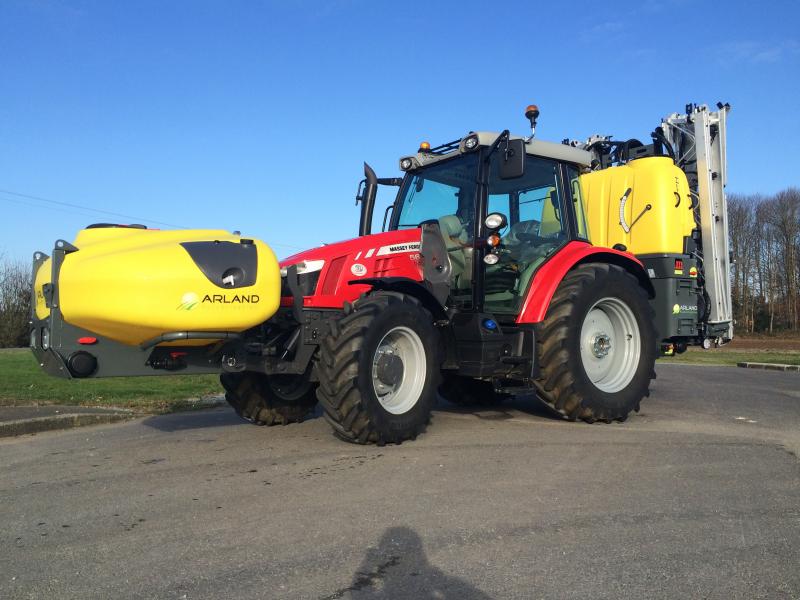Top 5 Signs Your Sprayer Parts Need Replacing (and How to Fix Them)
Is your sprayer not working as efficiently as it should? Knowing the top 5 signs your sprayer parts need replacing can help you keep your equipment in top shape. This article will guide you through recognising issues like inconsistent spray patterns, decreased pressure, visible cracks, unusual noises, and contaminated output. Addressing these problems early and following the manufacturer’s recommendations can save you from costly repairs and downtime.

Key Takeaways
- Inconsistent spray patterns can indicate issues with nozzles or air caps, requiring regular maintenance and prompt replacements to ensure optimal performance.
- Decreased pressure in sprayers often stems from valve or pump problems; regular inspections and maintenance are essential for consistent spraying efficiency.
- Visible cracks and leaks in hoses and tanks must be addressed immediately, as they compromise sprayer integrity and efficiency; timely replacements are crucial.
Inconsistent Spray Patterns
Inconsistent spray patterns can severely impact spraying efficiency. Symptoms include a pulsing spray or a hissing sound from the spray gun, often caused by loose nozzles or worn air caps. Addressing any detected issues promptly is essential.
Identifying and resolving these issues is often straightforward. Tightening or replacing the nozzle can resolve many problems. If the spray pattern remains inconsistent, wear on the air cap could be the cause.
Diagnosing Nozzle Problems

Identifying nozzle problems is key to maintaining a consistent spray pattern. A clogged or worn nozzle can significantly affect performance. Regular checks for wear, clogs, or damage are necessary to maintain functionality. Using clean water helps prevent blockages in spray guns.
Pay special attention to nozzles during cleaning. After flushing, inspect and clean the filters and tips to avoid future issues. Regular maintenance is vital to prevent residual chemical buildup, which can lead to clogs and affect performance.
Air Cap Wear and Tear
An uneven spray pattern can indicate a plugged or worn air cap. Flip the air cap to the opposite direction; if the spray pattern remains uneven, it may need paint replacement.
Cleaning the air cap might resolve some issues, but if the spray pattern does not improve, replacing it with a new one is advisable. Promptly addressing air cap wear ensures your sprayer maintains optimal performance.
Decreased Pressure
Decreased pressure in your sprayer system can lead to uneven spraying and reduced efficiency, often pointing to problems with valves or pumps. Monitoring pressure is crucial for even and effective spraying, as low pressure at the spray tip can result in inconsistency.
Identifying the root causes of decreased pressure, such as pump or valve issues, is essential. Regular maintenance of these components can prevent pressure drops and ensure smooth operation.
We will now explore pump maintenance and valve functionality.
Pump Maintenance
Maintaining the pump ensures even chemical distribution and prevents leaks. Regular post-use inspections help detect damages and leaks early. Replacing worn-out seals and tightening loose fittings can reduce operational noise and enhance performance.
Using manufacturer-recommended lubricants and fluids helps maintain optimal performance and aligns with the manufacturer’s recommendations. During the off-season, storing the pump with the correct fluids prevents rusting and damage from freezing conditions. Regular checks for leaks and pressure issues are crucial to maintain performance.
Valve Functionality
Valves maintain steady pressure during spraying. Inspecting them for wear can prevent pressure inconsistencies. Checking for signs of damage or malfunction helps identify faulty valves.
Faulty valves can cause inconsistent pressure, leading to uneven spraying and poor performance. Prompt replacement is crucial to maintain steady pressure.
Visible Cracks and Leaks
Visible cracks and leaks in hoses and tanks can significantly reduce sprayer efficiency. Regular visual inspections help identify cracks or wear that lead to inefficiencies and leaks. Immediate attention to these issues is crucial for proper function.
Cracks in hoses or tanks compromise the integrity of the entire spraying system, leading to the loss of all the water. Immediate replacement of damaged parts is essential to maintain efficiency and prevent further damage.
Inspecting Hoses and Tanks
Regular examinations of hoses and tanks should include checking for signs of wear, such as fractures or corrosion, to prevent leaks. Look for cracks, loose fittings, or leaks indicating hose issues.
Addressing any signs of damage in hoses or tanks immediately is critical to maintain the sprayer system’s integrity. Replacing worn fittings along with hoses can also prevent leaks.
Replacing Damaged Parts
When replacing damaged hoses, use parts compatible with the fluid being transported. Regular inspections and maintenance can prolong the life of sprayer parts and replace future damage.
Replacing damaged parts ensures the sprayer operates efficiently and without leaks, which can compromise the system. Hoses are among the most common components to crack or develop leaks over time.
Unusual Noises During Operation
Unusual noises during operation can indicate problems like component wear, air leaks, or improper fittings. Hissing sounds signal air leaks, while fluttering may indicate fluctuating pressure issues. Identifying and addressing these noises promptly is crucial to maintain performance.
Now, we will explore how to identify and fix these common problems.
Identifying Source of Noise
Unusual noises during operation, such as hissing or fluttering, can indicate problems with metal parts, air escape, or loose fittings. Checking for loose fittings or damaged components helps identify the noise source.
Solutions include tightening loose fittings or replacing worn or damaged components to eliminate noise. Proper maintenance and regular inspections can prevent these issues.
Fixing Common Problems
Addressing noise issues often involves tightening loose bolts or fittings and replacing worn components. Proper maintenance is crucial for maintaining system integrity and eliminating unwanted sounds.
Using the right cleaning solution and prevent freezing conditions helps maintain sprayer performance and reduce noise. Regular maintenance and prompt attention to issues are key to keeping your sprayer in top condition.
Contaminated Output
Contaminated output can result from residue buildup inside the tank, hoses, and nozzles. Cross-contamination is a significant risk when switching between chemicals. Cleaning the sprayer after every use ensures efficient operation and longevity, preventing blockages and corrosion.
Regular maintenance, including filter replacement and thorough cleaning, is essential to prevent contamination and ensure efficient operation. We will now discuss filter replacement and cleaning and flushing the system in more detail.
Filter Replacement
Filters are crucial as they prevent debris and dirt from entering the pump and nozzles. Dirty or clogged filters reduce system efficiency and can lead to damage over time.
Filters should be inspected and replaced regularly, following the manufacturer’s recommendations. Prompt replacement ensures efficient operation and prevents contamination.
Cleaning and Flushing System
To clean the sprayer, first empty the tank, then flush with clean water and rinse water, and run water through hoses, filters, and nozzles. Thorough flushing helps eliminate residual chemicals and prevents reactions that cause contamination.
Using clean flushing fluid during the cleaning process ensures thorough removal of contaminants. Regular cleaning and proper maintenance are essential to keep the sprayer in top condition and prevent contamination.
Winterisation
Proper winterisation helps maintain equipment functionality and readiness for spring, especially when storing it for an extended period. Failing to winterise equipment can lead to serious issues like cracked hoses and broken pumps due to liquid expansion in freezing conditions.
Using automotive antifreeze meant for RV or agricultural purposes ensures safety for all system components during winterisation. Proper winterisation protects the sprayer from damage and ensures it is ready for use when needed.
Summary

In summary, maintaining your sprayer involves regular inspection, timely replacement of worn parts, checking sprayers control units and proper maintenance practices. By addressing issues like inconsistent spray patterns, decreased pressure, visible cracks, unusual noises, and contaminated output, you can ensure your sprayer operates efficiently and effectively.
Taking proactive steps, such as following the manufacturer’s recommendations and performing regular maintenance, will extend the life of your sprayer and improve its performance. Keep your sprayer in top condition, and it will serve you well for many seasons to come.
Frequently Asked Questions
What are common signs that my sprayer parts need replacing?
If you’re noticing inconsistent spray patterns, decreased pressure, visible cracks or leaks, or unusual noises from your sprayer, it’s time to consider replacing the parts. These indicators ensure optimal performance and prevent further issues.
How often should I inspect my sprayer for issues?
To ensure your sprayer remains in optimal condition, conduct regular inspections after each use and at least once every season. This will help you identify any issues early on.
What is the importance of replacing filters in my sprayer?
Replacing filters is essential to prevent debris and dirt from entering the pump and nozzles, which helps maintain the sprayer’s efficiency and performance. Regular filter replacement ensures optimal operation and longevity of your equipment.
How can I prevent cross-contamination in my sprayer?
To prevent cross-contamination in your sprayer, always thoroughly clean and flush the system after each use, particularly when switching between different chemicals. This practice ensures a safe and effective application of your substances.
What steps should I take to winterise my sprayer?
To winterise your sprayer, use RV or agricultural antifreeze, drain all liquids, and store it in a protected environment to prevent freezing and damage. Taking these steps will ensure its longevity and functionality for the next season.





